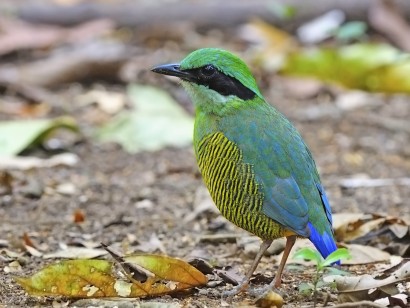Cambodia & South Vietnam Trip Report 2024
Our journey began in southern Vietnam, from the cool, isolated heights of the Da Lat plateau to the humid, wildlife-rich jungles of Cat Tien National Park—home to some of the finest birding in all of Asia. Crossing into Cambodia, we wandered through the timeless forests and ancient temples of Angkor Wat, scanned vast seasonal wetlands alive with birdlife, explored the last great tracts of dry dipterocarp forest left in Southeast Asia, and traced the mighty Mekong in search of the elusive Irrawaddy Dolphin.
VIETNAM
Day 1
Dinner and introductions in Ho Chi Minh City.
Day 2
We departed early and made several stops along our long drive to Dalat. Our first few sites along the road gave us a quick introduction to some of the more common species in the Vietnamese countryside. Ascending higher into the hills, we reached better patches of native woodland and soon picked up our first regional endemics, Vietnamese Greenfinch and Indochinese Barbet. Other highlights in this area included Fire-breasted Flowerpecker, Green-billed Malkoha, Black Eagle, Crested Goshawk, Chestnut-headed Bee-eater, Vernal Hanging-Parrot, Maroon Oriole and Streaked Spiderhunter. We continued towards Dalat passing through more agricultural lands picking up birds such as Burmese Shrike, Eurasian Hoopoe and House Swift. Once on the Dalat Plateau, we made a late afternoon visit to a promising patch of forest and found a very cooperative endemic, Dalat Bush Warbler. Other highlights include Silver Pheasant, Gray Nightjar, Mountain Scops-Owl, Collared Owlet, Kloss’s Leaf Warbler, Mountain Fulvetta, Black-headed Sibia, Blue-winged Minla and Verditer Flycatcher.
Day 3
We began the day early in one of the more accessible patches of healthy forest on the Dalat Plateau. Bird-trapping is a huge issue in much of Asia, particularly Vietnam, and many of the region’s unique songsters such as Laughingthrushes are prime targets. As a result, several of the more localized species are critically endangered.
Luckily, we found our main target for the day, Collared Laughingthrush, fairly quickly–a beautiful bird with an uncertain future. We spent the rest of the day looking for other endemic species and subspecies. Highlights included Rufous-throated Partridge, Gray-faced Buzzard, Blue-bearded Bee-eater, Necklaced Barbet, Bay Woodpecker, Greater Yellownape, “Dalat” White-browed Shrike-Babbler, Clicking Shrike-Babbler, Pygmy Cupwing, Mountain Tailorbird, “Gray-crowned” Black-throated Tit, Black-headed Parrotbill, Rufous-capped Babbler, White-browed Scimitar-Babbler, Black-crowned Fulvetta, Short-tailed Scimitar-Babbler, Vietnamese Cutia, Black-headed Sibia, Chestnut-vented Nuthatch, Large Niltava, Lesser Shortwing, White-tailed Robin, Mugimaki Flycatcher, Snowy-browed Flycatcher, more Vietnamese Greenfinches and “Dalat” Red Crossbill.
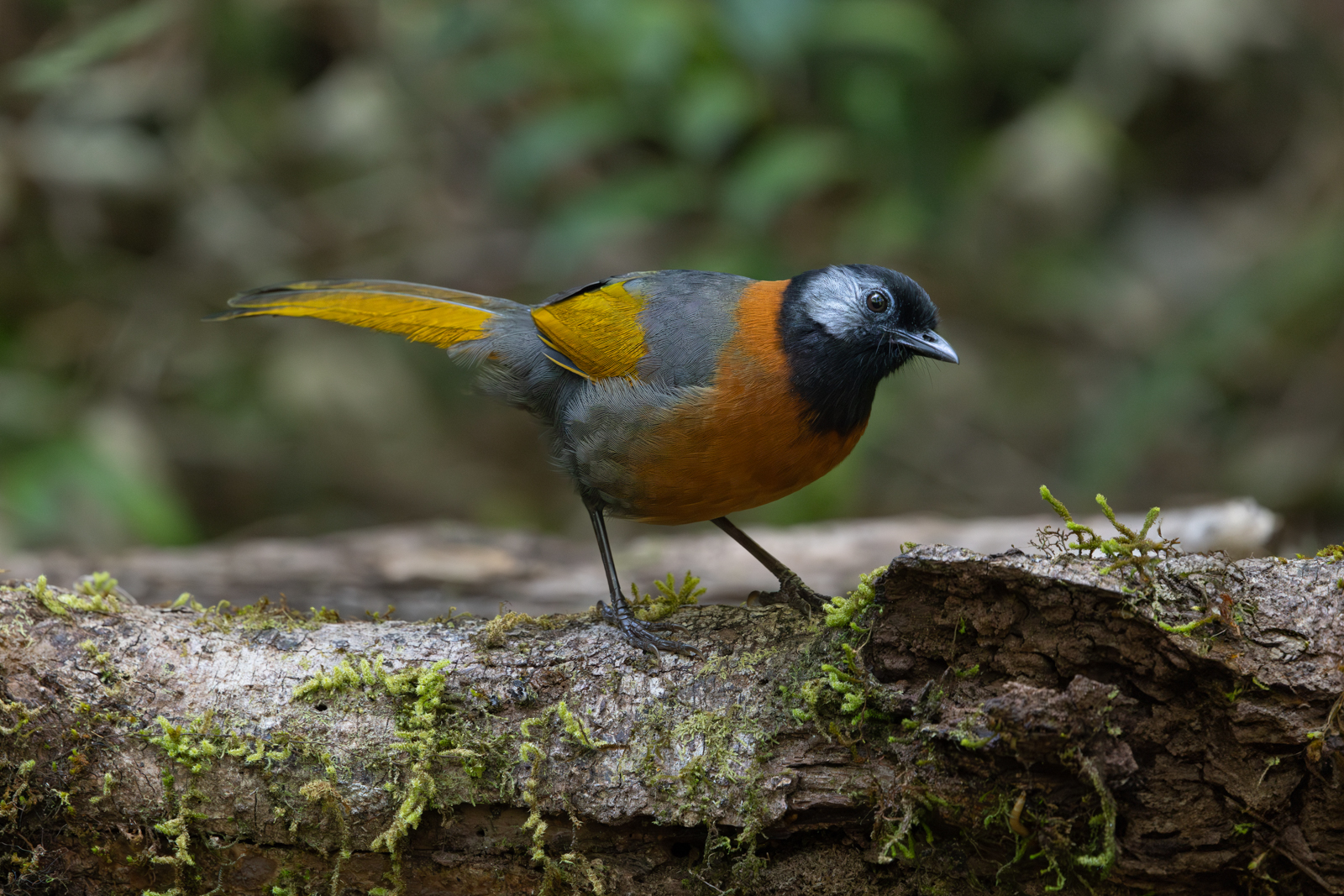
Collared Laughingthrush © Chris Burney
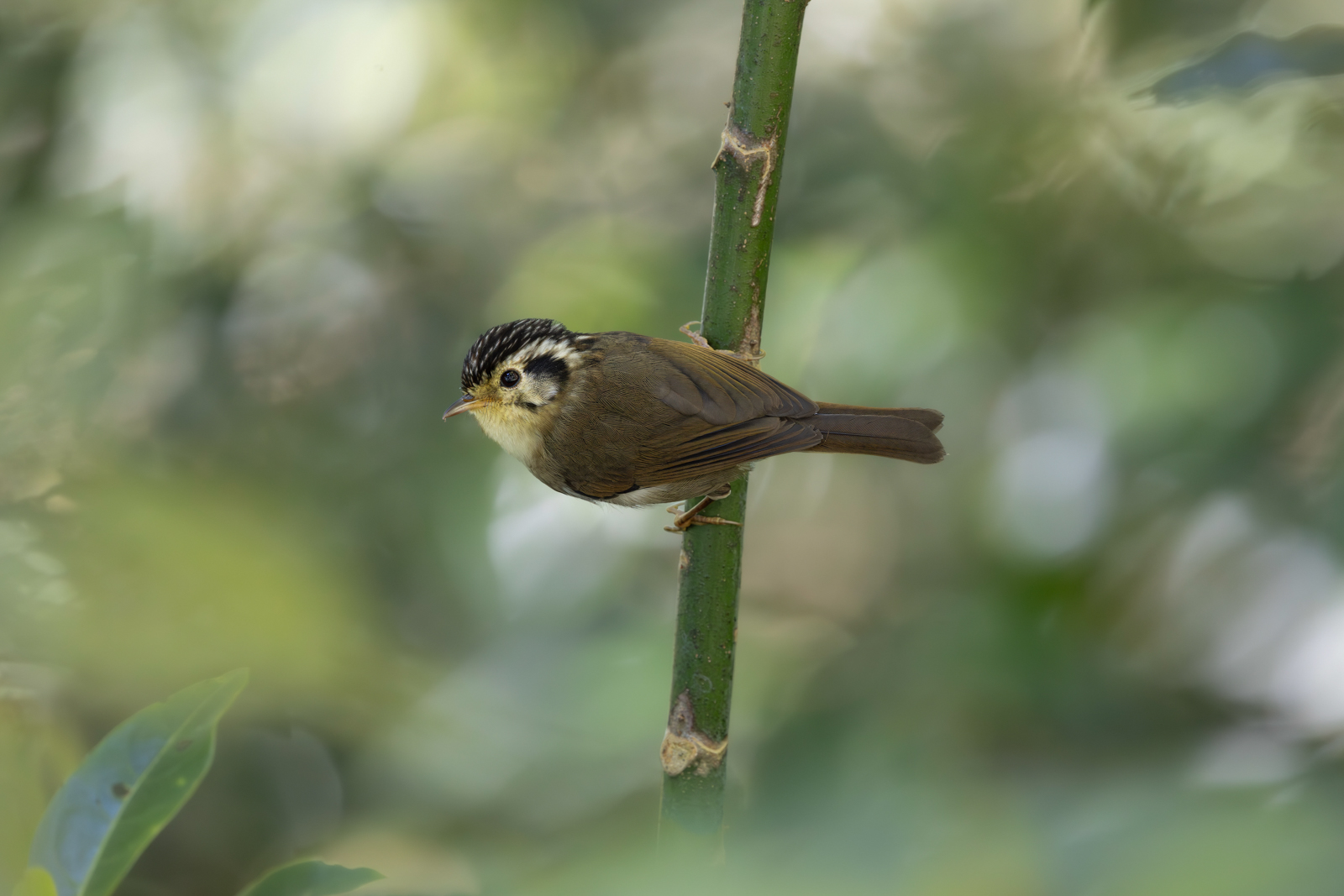
Black-crowned Fulvetta © Chris Burney
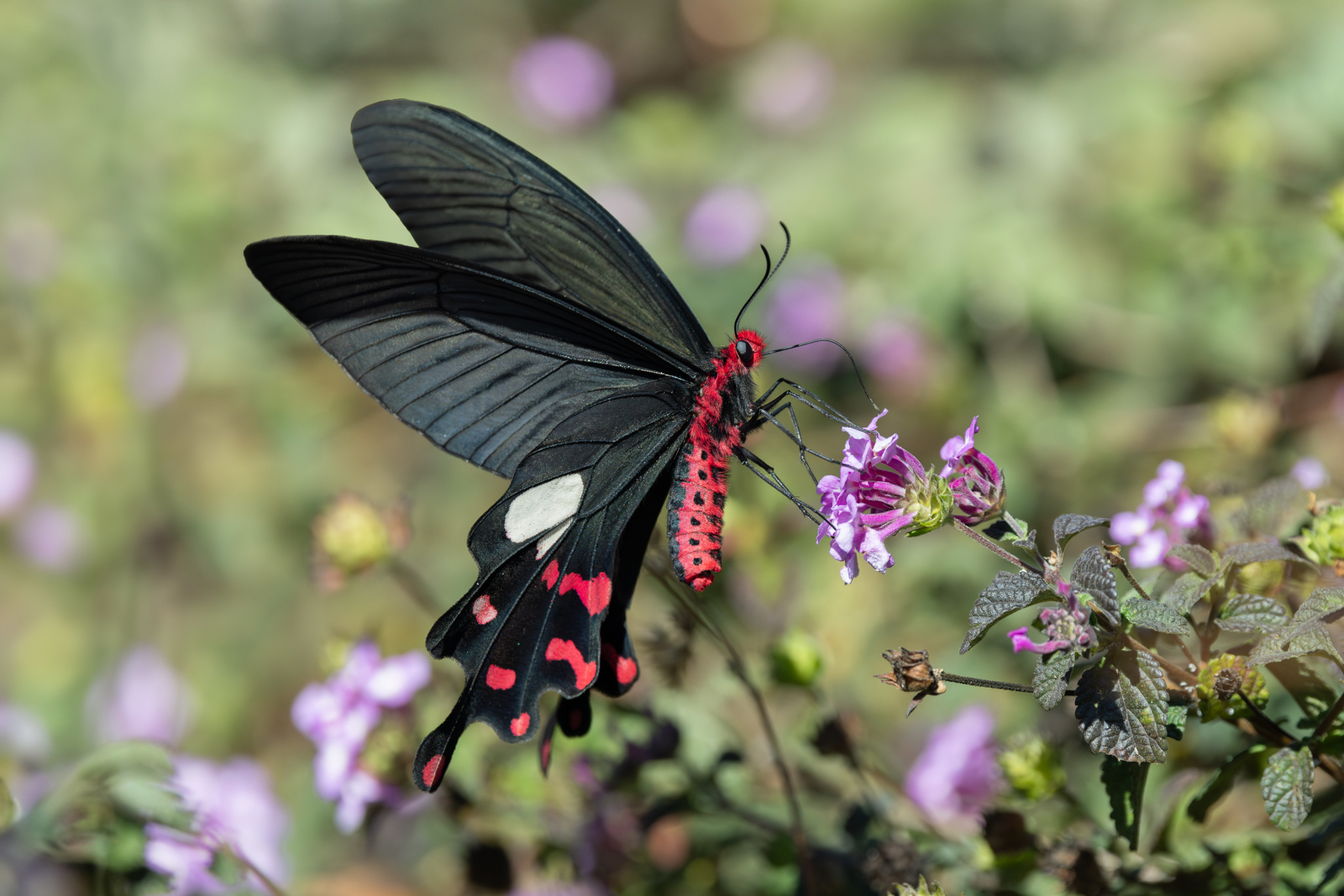
Common Windmill © Chris Burney
Day 4
We explored other birding hotspots on the Dalat Plateau in search of regional endemics. We found some of our main targets at the first stop such as Yellow-billed Nuthatch, Red-vented Barbet and Gray-crowned Crocias–a species only rediscovered in 1994. Other highlights in the area included Crested Serpent-Eagle, Blue Pitta, better looks at Black-headed Parrotbill, Red-billed Scimitar-Babbler, and Green Cochoa.
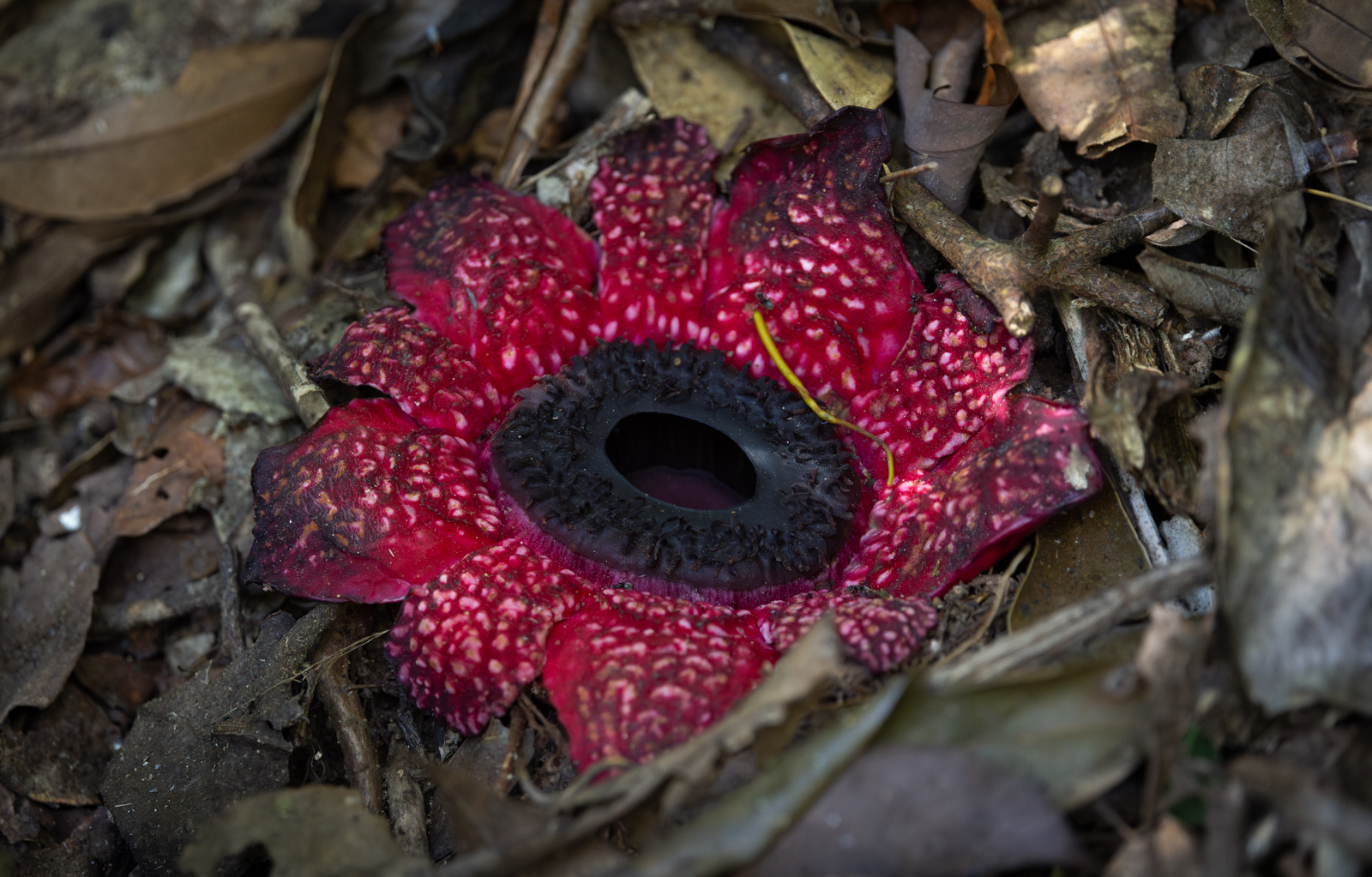
Himalayan Sapria © Chris Burney
Our post-lunch stops were less productive, but we managed to find a few new albeit widespread species such as Square-tailed Drongo-Cuckoo, Little Pied Flycatcher, Black-throated Sunbird, Mrs. Gould’s Sunbird, nice views of Hill Prinia, Gray-capped Pygmy Woodpecker and Indian White-eye.
We hiked a forested trail in the late afternoon which gave us amazing eye-level views of Long-tailed Broadbill and White-throated Rock-Thrush. Other birds highlights included Mountain Imperial-Pigeon, Banded Bay Cuckoo, more Square-tailed Drongo-Cuckoos, Collared Owlet, Necklaced Barbet, Indochinese Barbet, Speckled Piculet, White-bellied Erpornis, White-spectacled Warbler, Chestnut-crowned Warbler, Kloss’s Leaf Warbler, Mountain Fulvetta and Blue-winged Minla.
Day 5
We spent our last morning on the Dalat Plateau exploring the Ta Nung Valley. The site is a recreation area surrounded by forest and a famous one for Gray-crowned Crocias, and we get better views of several birds almost immediately. Vietnamese Greenfinches also give us some amazing views, but overall, we didn’t add much new to the list. Highlights included Thick-billed Pigeon, Asian Barred Owlet, Eurasian Jay, Gray-eyed Bulbul, Ashy Bulbul, Gray-cheeked Warbler, Black-headed Sibia, Green Cochoa, Large Niltava, Mugimaki Flycatcher, “Dalat” Black-throated Sunbird, Streaked Spiderhunter and Asian Fairy-bluebird.
We then left Dalat to explore the Deo Nui San Pass. When we got to our resort, we had lunch and did a little birding on the grounds and neighboring farmland. We found several new ones including Greater Coucal, Cinnamon Bittern, Common Kingfisher, White-throated Kingfisher, Red-breasted Parakeet, Common Iora, Black-naped Monarch, Asian House-Martin, Pin-striped Tit-Babbler, Scarlet-backed Flowerpecker, White-rumped Munia, and a regional endemic, Annam Prinia.
For the afternoon, we headed up to the Deo Nui San Pass to bird the forested hillsides. Though it was fairly quiet, we did manage to find some birds, highlights included Red-headed Trogon, Red-vented Barbet, Indochinese Barbet, Speckled Piculet, Vernal Hanging-Parrot, Long-tailed Broadbill, Blue Pitta, Gray-faced Tit-Babbler, Streaked Wren-Babbler, Orange-headed Thrush and Blue Whistling-Thrush.
Day 6
We started back up early at Deo Nui San Pass in the same areas we explored yesterday, but the birds are much more active. Though we ran into many of the same birds as yesterday, we came across several new ones including Pin-tailed Green-Pigeon, Blue-bearded Bee-eater, a multi-species flock of minivets, Black-winged Cuckooshrike, Indochinese Green-Magpie, Black-chinned Yuhina, Buff-breasted Babbler, Orange-headed Thrush and Siberian Blue Robin. Mammals included were Pallas’ Squirrel, Northern and Slender-tailed Tree-shrews, and a very unexpected Yellow-bellied Weasel.
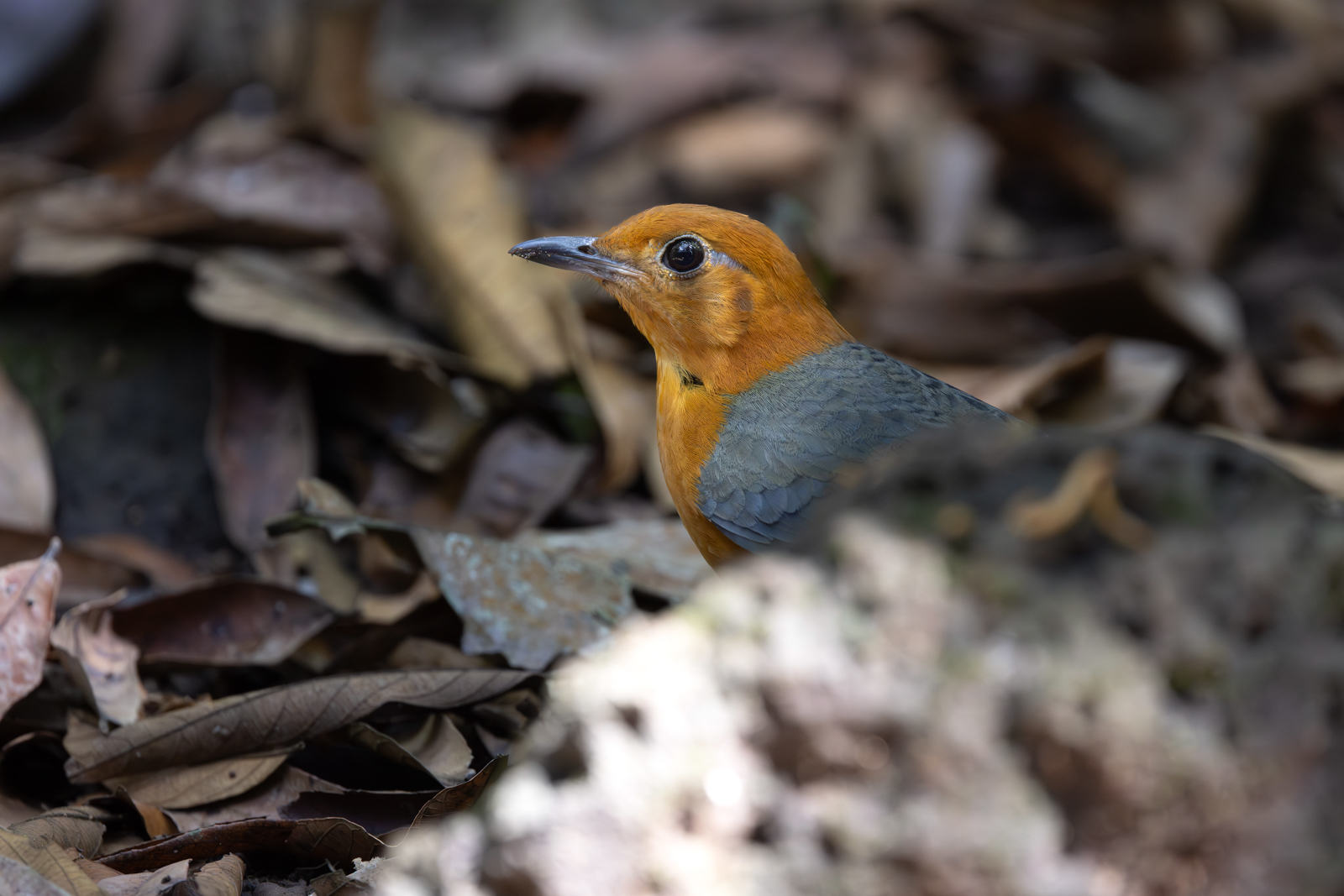
Orange-headed Thrush © Chris Burney
We then left the hills to explore one of Vietnam’s gems, Cat Tien National Park. This park is part of a UNESCO World Heritage Site and covers an area of about 720 km2–protecting one of the largest areas of lowland tropical forests left in Vietnam.
After lunch, a ferry ride and check-in, we hit the trails around the headquarters. Primary forest is often quiet and can feel surprisingly empty at times, but perseverance paid off and we eventually tally over 50 species in a few hours. Highlights include Scaly-breasted Partridge, Ashy-headed Green-Pigeon, Violet Cuckoo, Great Eared-Nightjar, Blue-eared Kingfisher, Dollarbird, Blue-eared and Green-eared Barbets, Greater and Common Flamebacks, Laced Woodpecker, Black-and-red Broadbill, Banded Broadbill, Black-hooded Oriole, Golden-crested Myna, Thick-billed Flowerpecker and Purple-naped Spiderhunter. Mammal highlights included Yellow-cheeked Gibbon, Long-tailed Macaque and Lesser Fruit Bat.
Day 7
In the morning, we visited the blinds around the headquarters and hiked the trails to the north. Fantastic birding is almost guaranteed at Cat Tien National Park, and you never know what to expect. Morning highlights included Asian Emerald Dove, great views of roosting Brown Boobooks, Orange-breasted Trogon, Eurasian Hoopoe, Blue-tailed Bee-eater, Pied Kingfisher, Heart-spotted Woodpecker, Blue-rumped Pitta, Bar-bellied Pitta, Oriental and Indochinese Cuckooshrikes, Great Iora, Scaly-crowned Babbler, Puff-throated Babbler, Abbot’s Babbler, White-crested Laughingthrush, Velvet-fronted Nuthatch and Indochinese Blue Flycatcher.
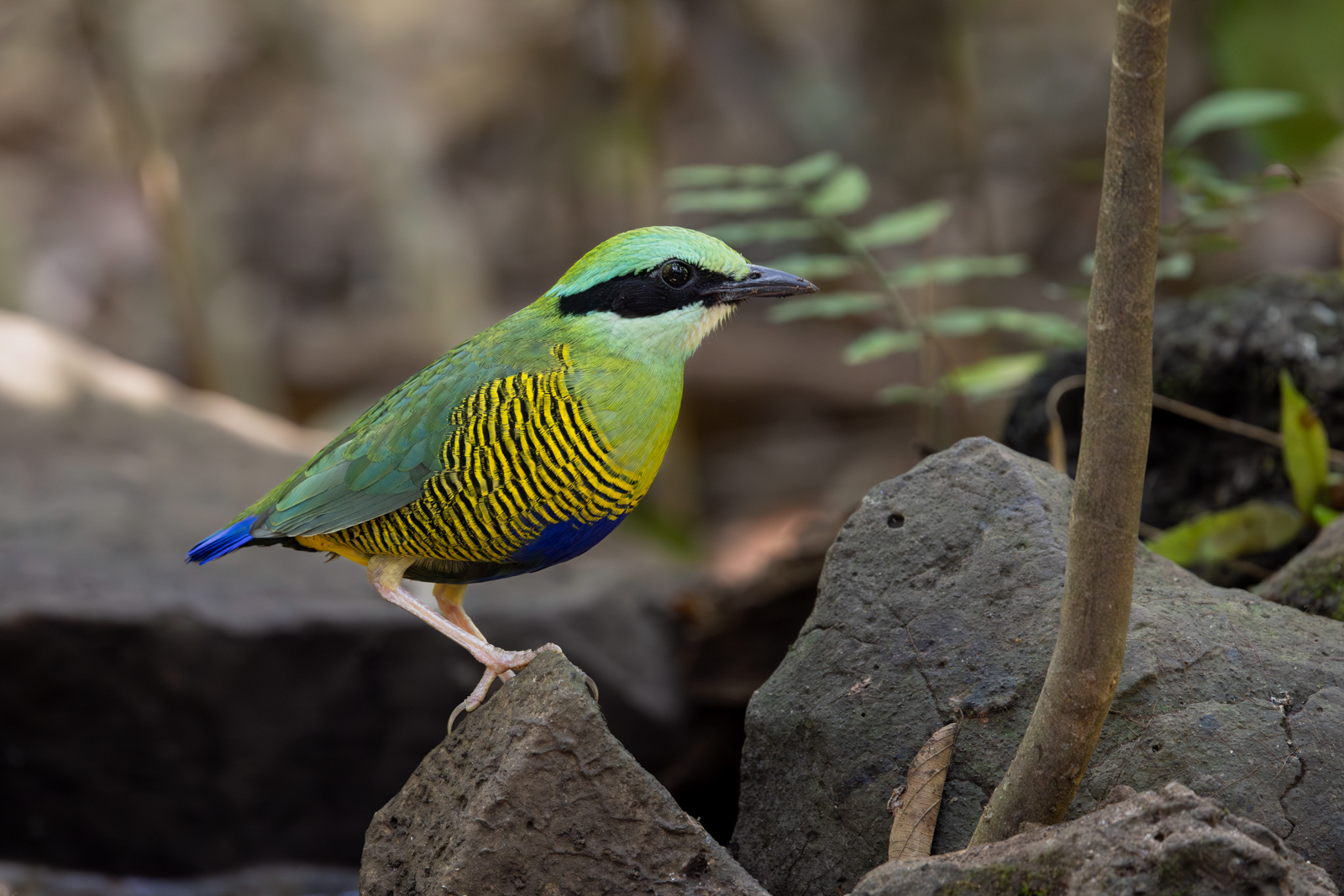
Bar-bellied Pitta © Chris Burney
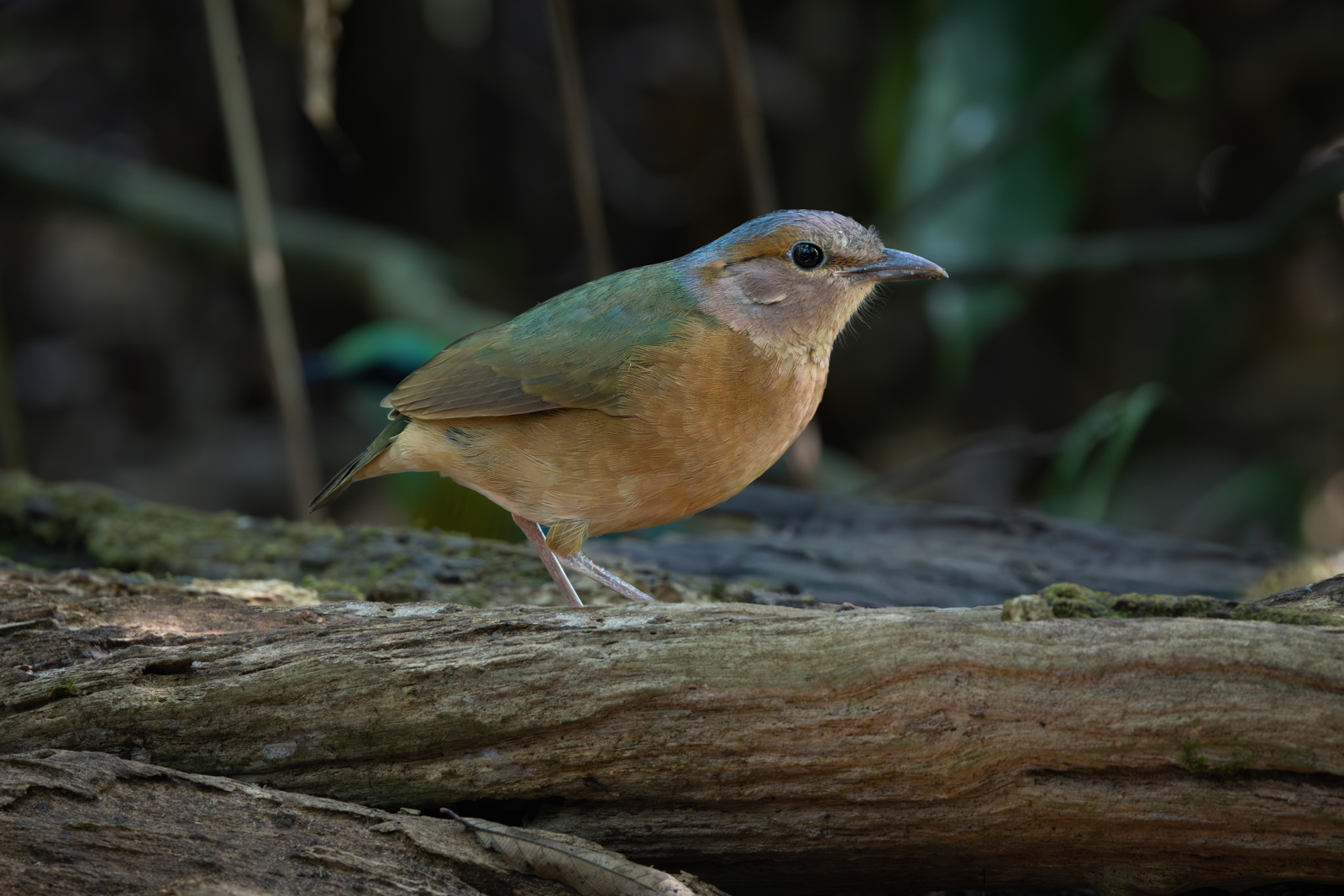
Blue-rumped Pitta © Chris Burney
In the afternoon, we did the blinds again and a game drive to the south of headquarters. Highlights included Green Peafowl, Germain’s Peacock-Pheasant, Red Junglefowl, Chinese Francolin, Lesser Coucal, Large-tailed Nightjar, Black-backed Dwarf-Kingfisher, Indochinese Roller, Chestnut-capped Babbler, Vinous-breasted Myna and Pied Bushchat.
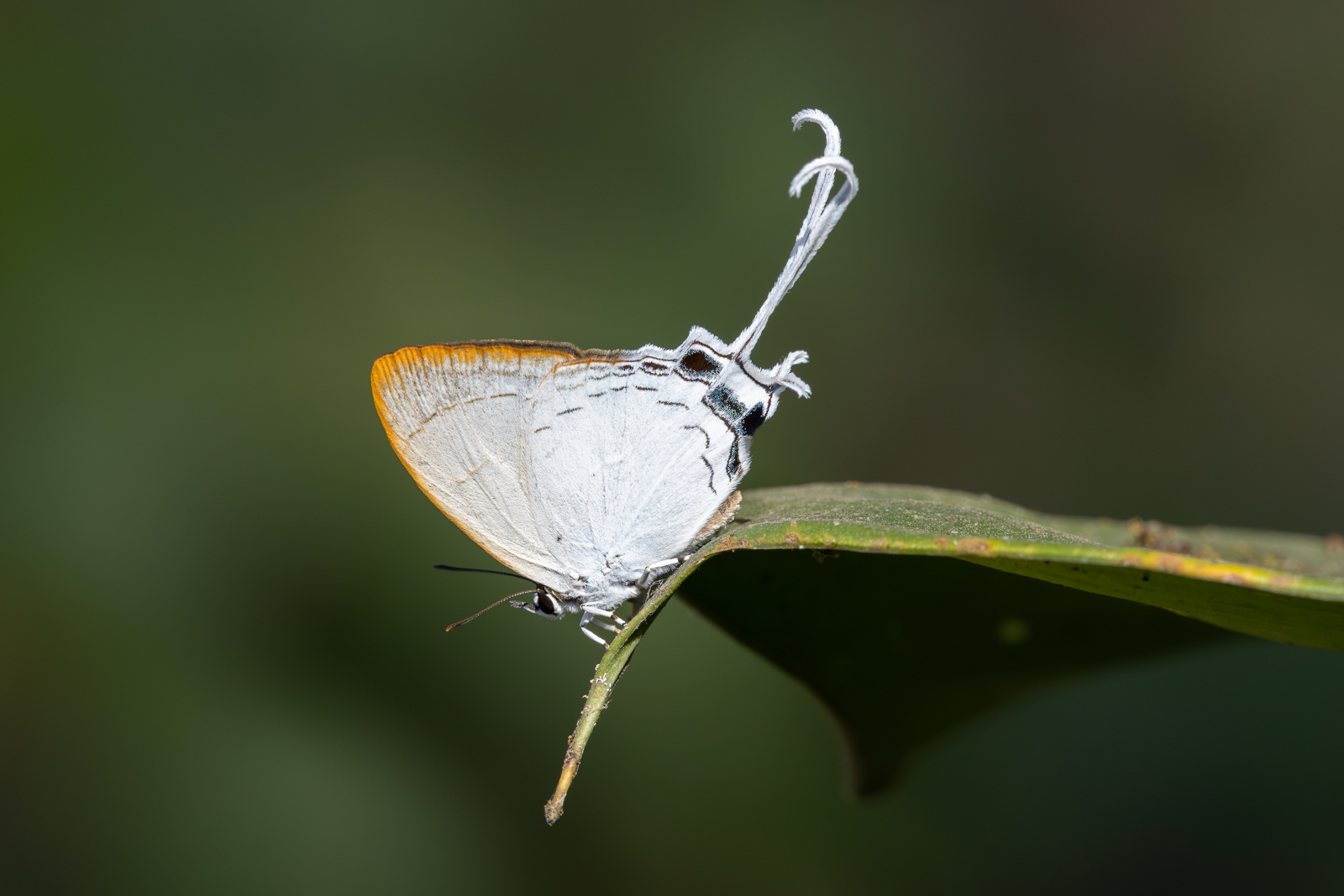
Common Imperial © Chris Burney
Also a fantastic day for mammals capped off with a Gaur and a Sambar Deer on the game drive.
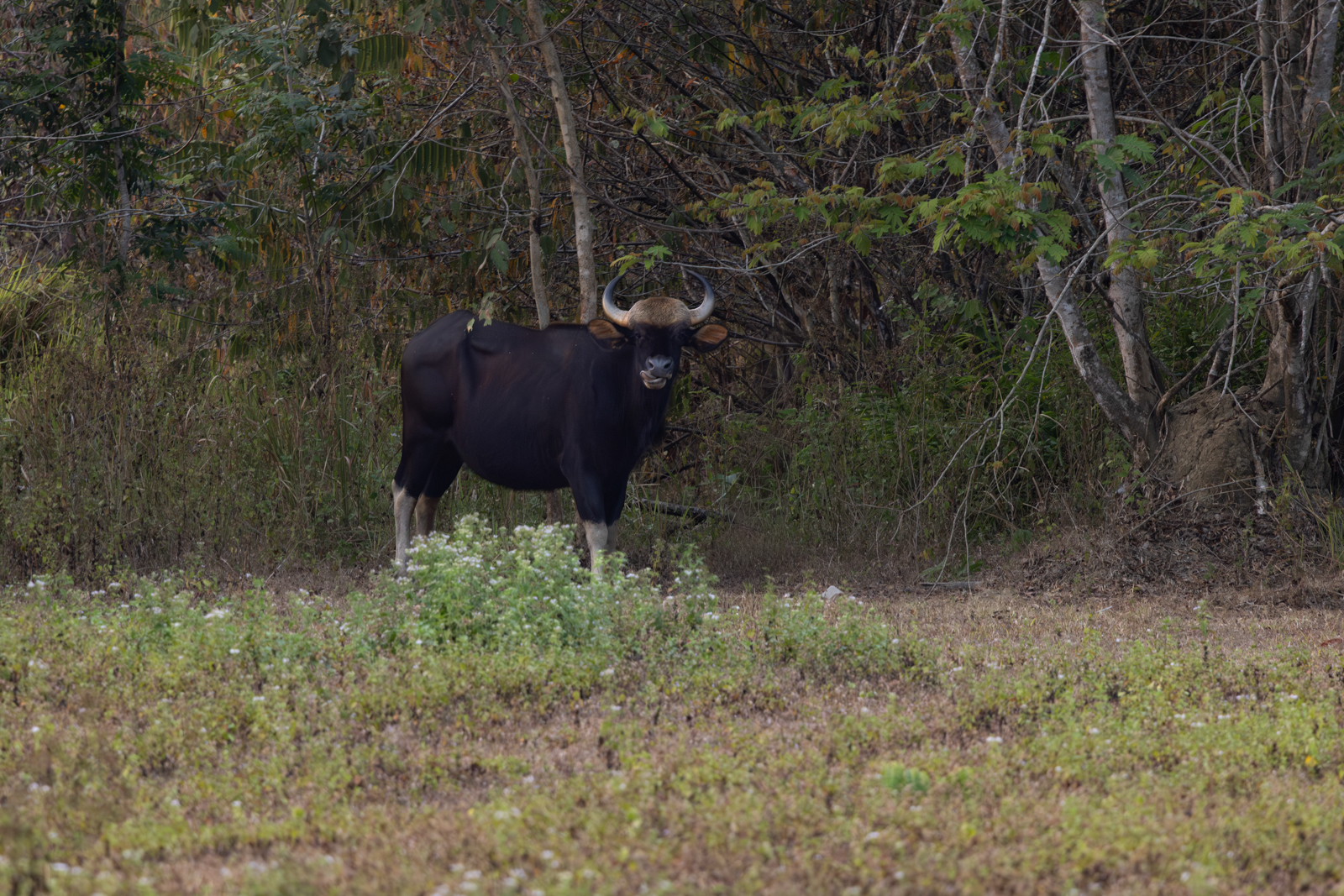
Gaur © Chris Burney
Day 8
This morning was a repeat of the previous morning though we ventured further north on the game roads. This morning we nearly doubled yesterday’s morning list–highlights included more Green Peafowl, “Green-legged” Scaly-breasted Partridge, more Germain’s Peacock-Pheasants, Great Hornbill, more Heart-spotted Woodpeckers, White-bellied Woodpecker, Large Woodshrike, Ruby-cheeked Sunbird, and Blue-winged Leafbird.
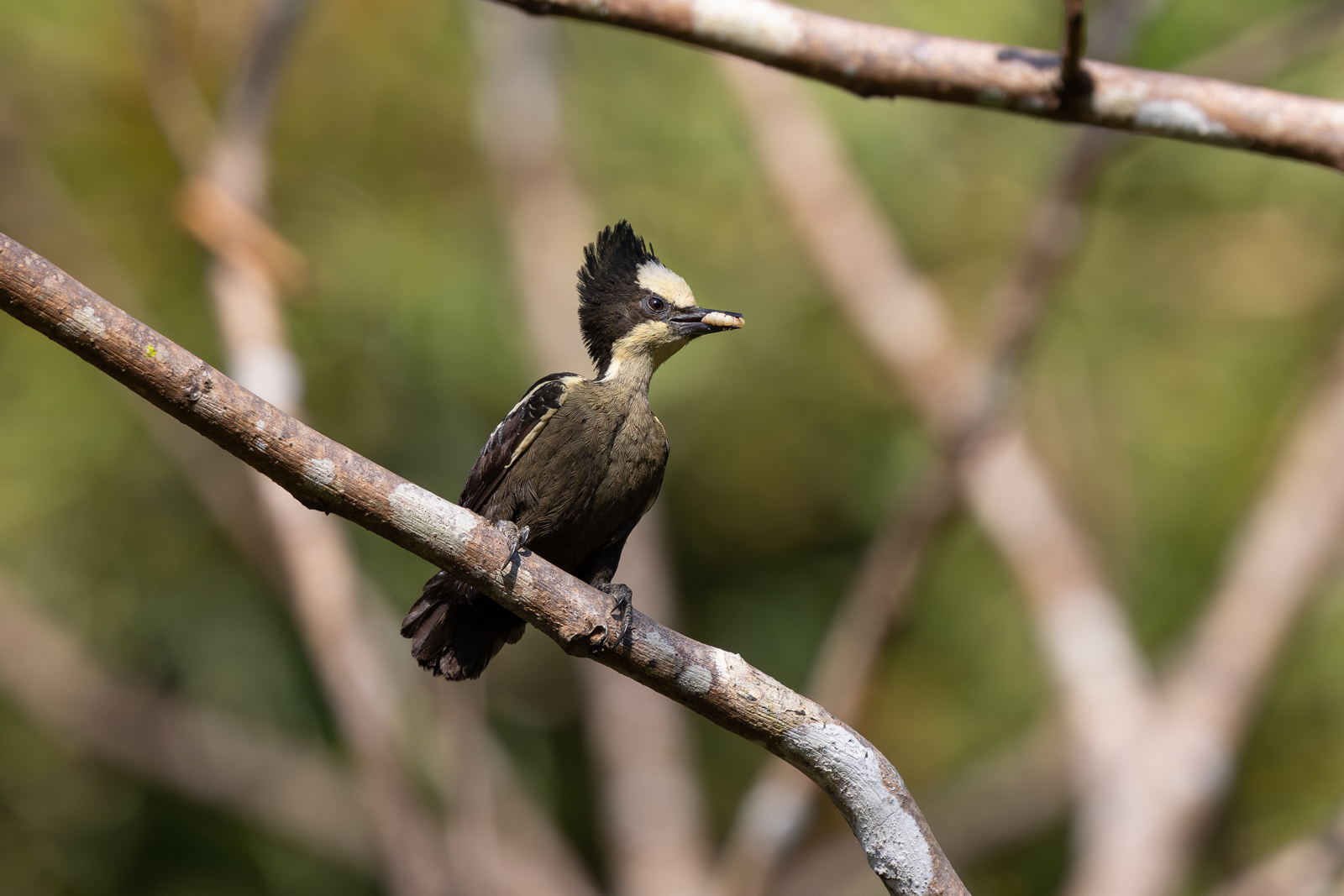
Heart-spotted Woodpecker © Chris Burney
The best find for mammals today was a Lesser Mouse Deer. The rest of the list included Indochinese Ground Squirrel, Cambodian Striped Squirrel, Pallas’ Squirrel, more Yellow-cheeked Gibbons, and Northern Tree-shrew.
Day 9
Today’s main target was Black-shanked Douc-langurs, and we headed north again on the game drives. We got lucky and found a large family group moving across the road. Highlights for birds included a heard-only Oriental Bay-Owl, Plaintive Cuckoo, Oriental Pied-Hornbill, Banded Kingfisher, White-browed Piculet, Pale-headed Woodpecker and Great Slaty Woodpecker.
In the afternoon, we took game vehicles to a series of larger wetlands/grasslands far from camp. New birds included Orange-breasted Green-Pigeon, a quick look at Gray-headed Fish-Eagle. Mammals seen on the drive included Red Muntjac, Pig-tailed and Long-tailed Macaques, and more Yellow-cheeked Gibbons.
Day 10
As we departed Cat Tien National Park in the morning, we found our last bird for Vietnam, a Blyth’s Paradise-Flycatcher.
We spent the rest of the day en route to Cambodia flying from Ho Chi Minh City to Siem Riep.
CAMBODIA
Day 11
We got up very early today to experience the sun rising through the famous lotus-bud towers of Angkor Wat–the apex of the Khmer architectural style. We spent the entire day exploring the massive complex of temples that make up Angkor, and looking for wildlife in the jungles that have replaced the courtyards and overtaken in spectacular fashion many of the older collapsed ruins.
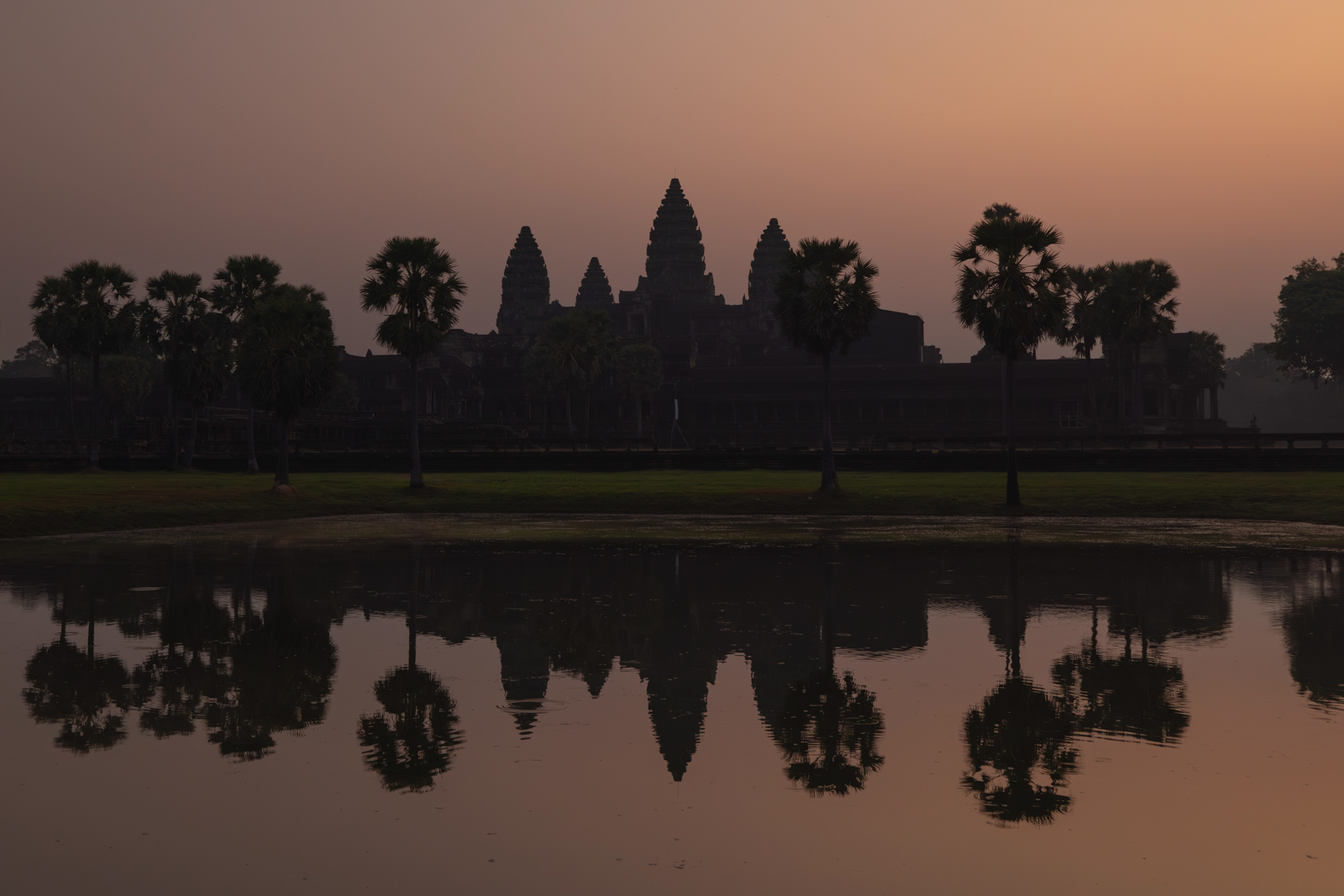
Angkor Wat at sunrise © Chris Burney
Once the sunrise show ended, we headed into the core temple zone passing through gates designed to accommodate elephants. The corridors and passages were a feast for the eyes, covered in reliefs depicting both mythological narratives and important historical events. As we made our way to the outer wall and moat, we passed through large patches of forest. Birding highlights here included Oriental Darter, Besra, Shikra, Asian Barred Owlet, Black-capped Kingfisher, Black-naped Monarch, Hainan Blue Flycatcher, Ruby-cheeked Sunbird, and our main target, Forest Wagtail.
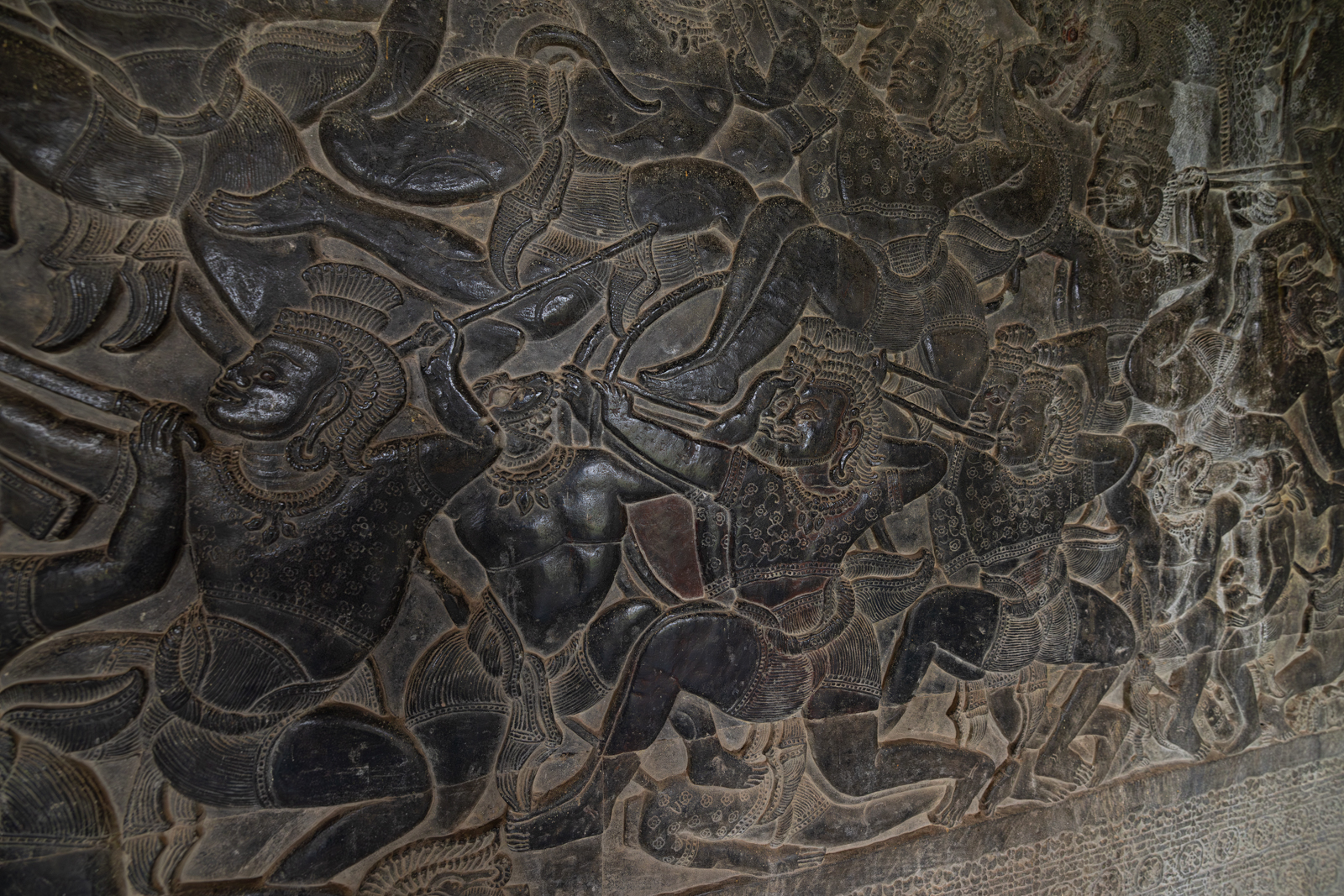
Angkor Wat relief © Chris Burney
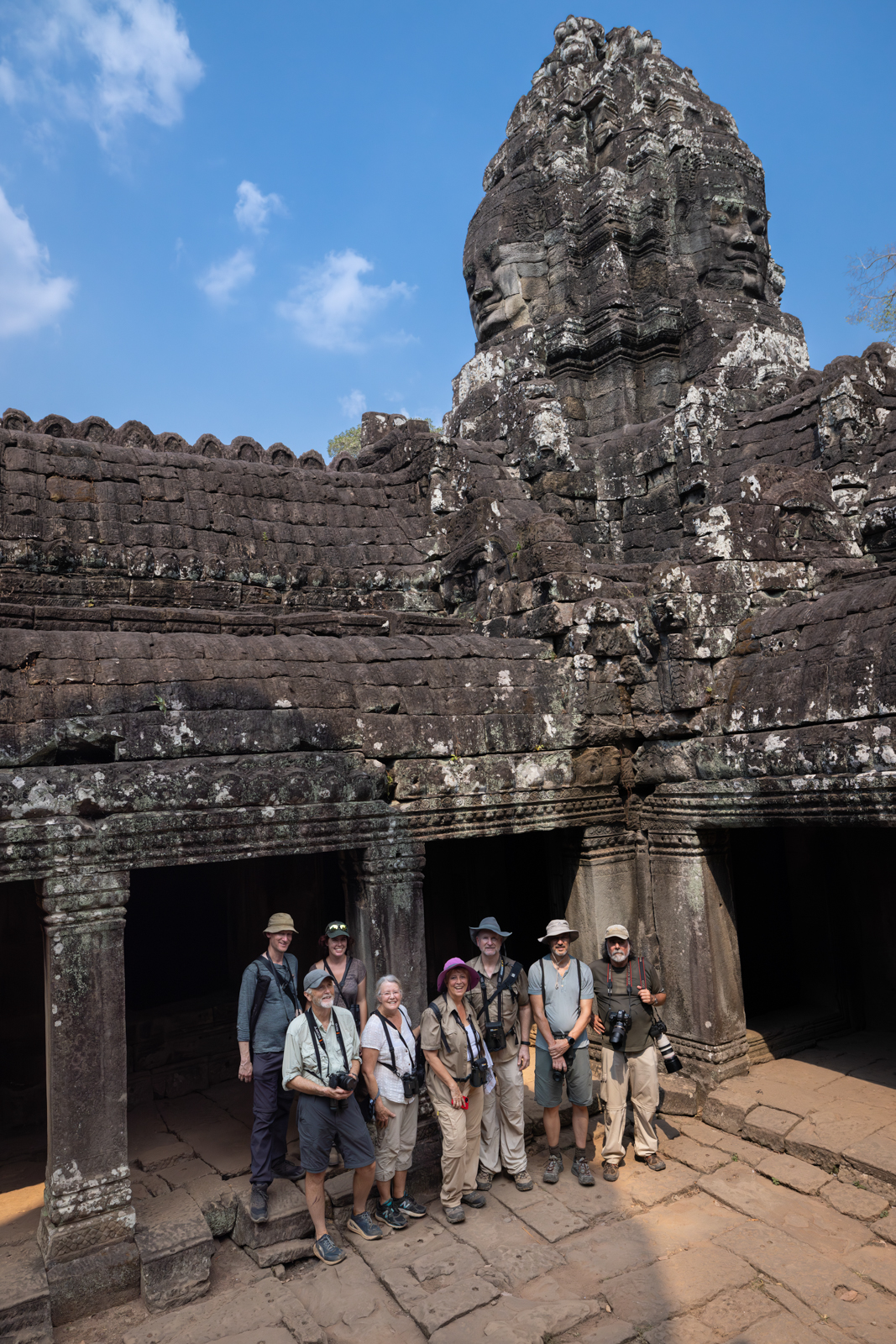
Our group at Ankor Wat © Chris Burney
We then went to the “Tomb Raider” temple of Ta Prohm, largely unrestored and famous for the massive strangler fig, banyan and kapok trees that have grown into and over the temple infrastructure. Also a famous site for Alexandrine Parakeet, and we found our target fairly quickly along with more common Red-breasted Parakeets.
We ended our visit to Angkor exploring the Bayon, the chief monument within the Angkor Thom complex. With towers covered in faces and a more chaotic network of passages with reliefs depicting everyday life, the Bayon offers another take on Khmer architecture.
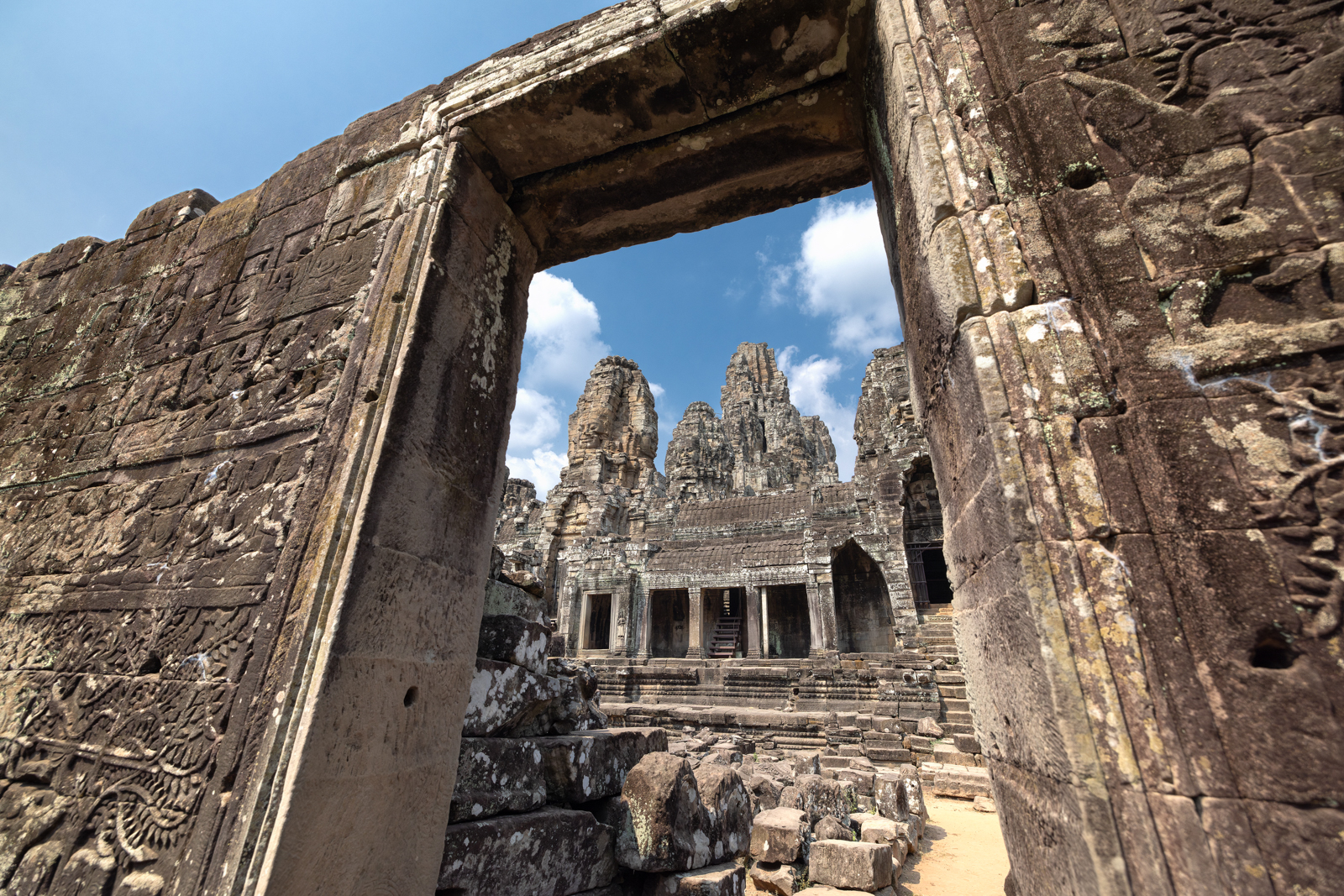
Bayon © Chris Burney
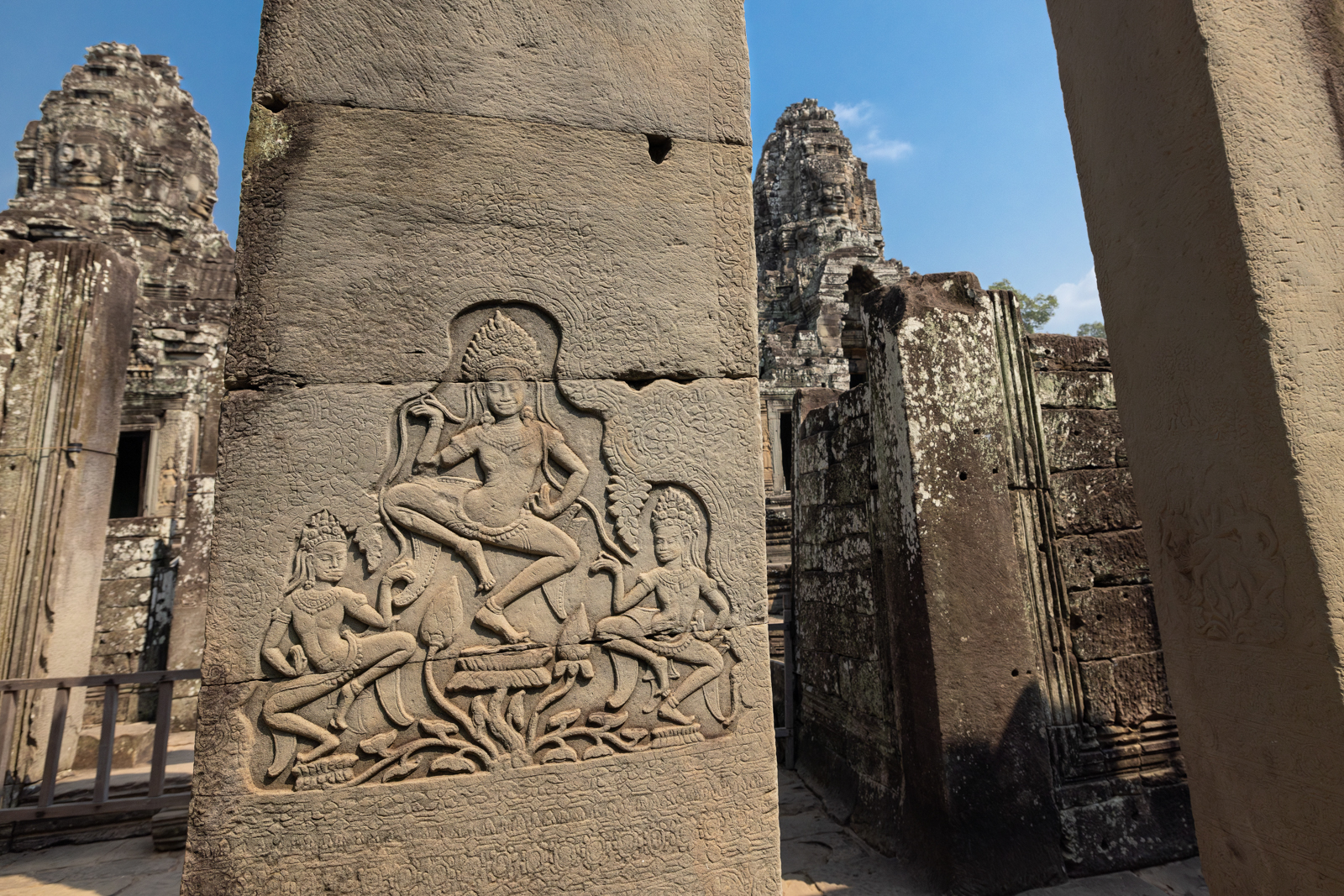
Bayon © Chris Burney
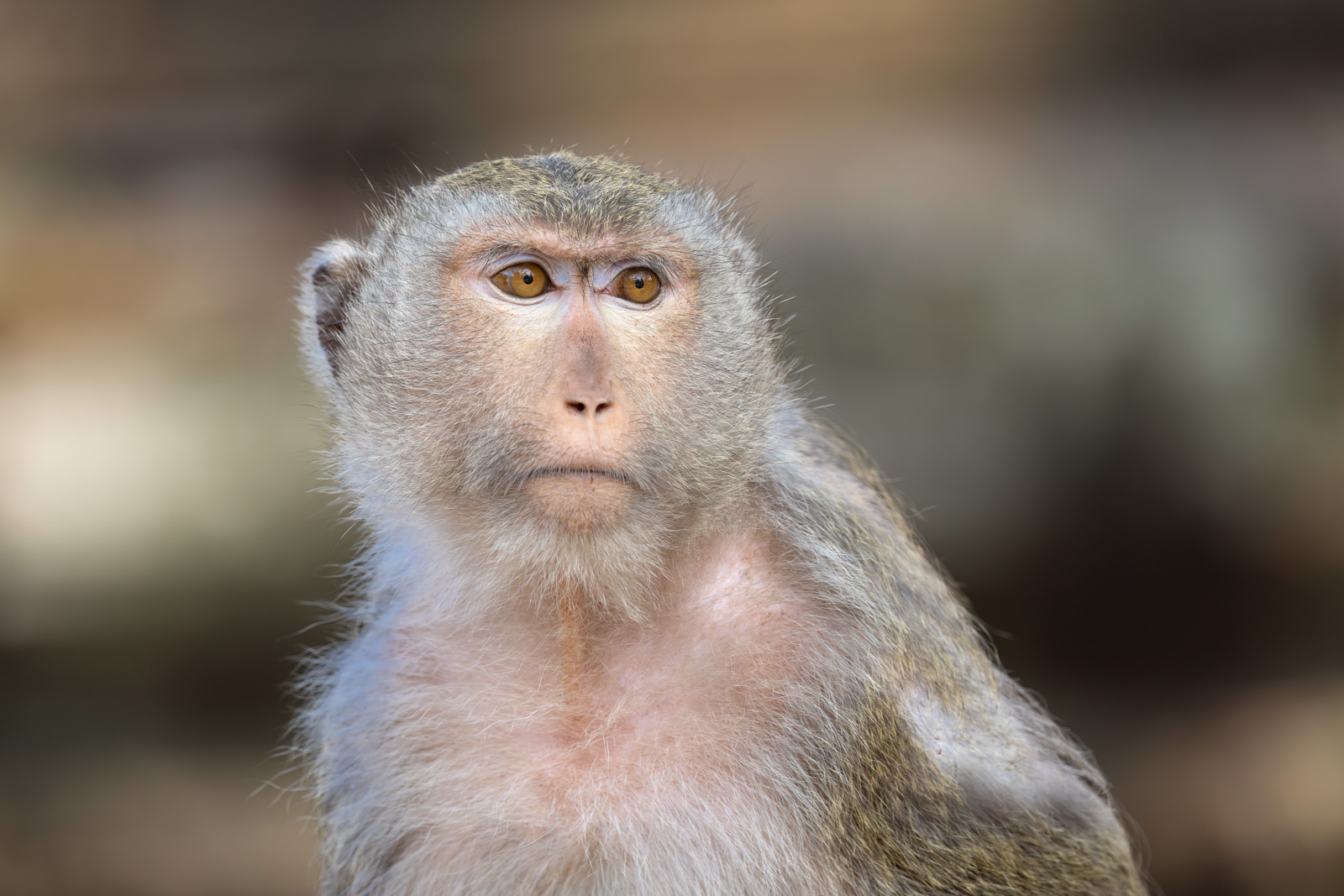
Long-tailed Macaque © Chris Burney
Day 12
Our Cambodian team took us northwest of Siem Reap to the large reservoir of Trapeang Thma Lake where they work closely with local communities to protect several birds which are now rare or extirpated in other parts of SE Asia. As it is the dry season, we walked through dry paddyfields in search of our main target, Sarus Crane, and with the help of local spotters, we eventually found a small group. Other highlights included Cotton Pygmy-Goose, Garganey, Indian Spot-billed Duck, Gray-headed Lapwing, Pheasant-tailed and Bronze-winged Jacanas, Oriental Pratincole, Painted Stork, Spot-billed Pelican, Black Baza, Greater Spotted Eagle, Booted Eagle, Imperial Eagle, Eastern Marsh Harrier, Pied Harrier, Rufous-winged Buzzard, Eastern Barn Owl, Spotted Owlet, Spotted Wood-Owl, Pied Kingfisher, Freckle-breasted Woodpecker, White-shouldered Starling, Purple Sunbird and Plain-backed Sparrow.
Day 13
The morning was spent exploring the dried margins of the massive lake Tonle Sap for a critically endangered bird, the Bengal Florican. Again, our Cambodian team has fostered community conservation to help protect this special species, and we got help from several locals in finding the birds. After finding the Floricans, we continued exploring this vast network of seasonal wetlands. Highlights included more Sarus Cranes, various shorebirds, Eurasian Kestrel, Indochinese Bushlark, Singing Bushlark, Oriental Skylark, Manchurian Reed Warbler, Oriental Reed Warbler, Lanceolated Warbler, Striated Grassbird, Bluethroat, Red Avadavat, Chestnut-eared Bunting and large numbers of endangered Yellow-breasted Buntings.
After lunch, we drove to the north to Tmatboey, a rural area with some of the largest remaining tracts of dry Dipterocarp forest in SE Asia, and some of the rarest bird species in the world, namely the Giant Ibis and White-shouldered Ibis. We spent the afternoon looking for the latter, and again, with the help of local community conservation, found a bird fairly quickly. Other highlights included Chinese Francolin, Crested Treeswift, Rufous-winged Buzzard, three Bee-eaters, Great Slaty Woodpecker, Blossom-headed Parakeet, Red-billed Blue-Magpie and Chestnut-capped Babbler.
Day 14
Our goal today was the other ibis, and we explored another section of Tmatboey where local rangers had recorded birds recently. We eventually got amazing scope views of our main target, and find many other special birds unique to this forest type including more Chinese Francolins, Yellow-crowned Woodpecker, Black-headed Woodpecker, White-rumped Falcon, more Blossom-headed Parakeets, Small Minivet, Oriental Cuckooshrike and Burmese Nuthatch. Other highlights included Green Imperial-Pigeon, Violet Cuckoo, Asian Woolly-necked Stork, Lesser Adjutant, Greater Flameback, Greater Yellownape, Vernal Hanging-Parrot, White-crested Laughingthrush and White-rumped Shama.
In the afternoon, we headed back out into the dry forests finding a few new birds and getting better looks at many others. Highlights included roosting Savanna Nightjar and Brown Boobooks near camp, Large-tailed Nightjar, another Yellow-crowned Woodpecker, Rufous-bellied Woodpecker, Brown Prinia and Velvet-fronted Nuthatch.
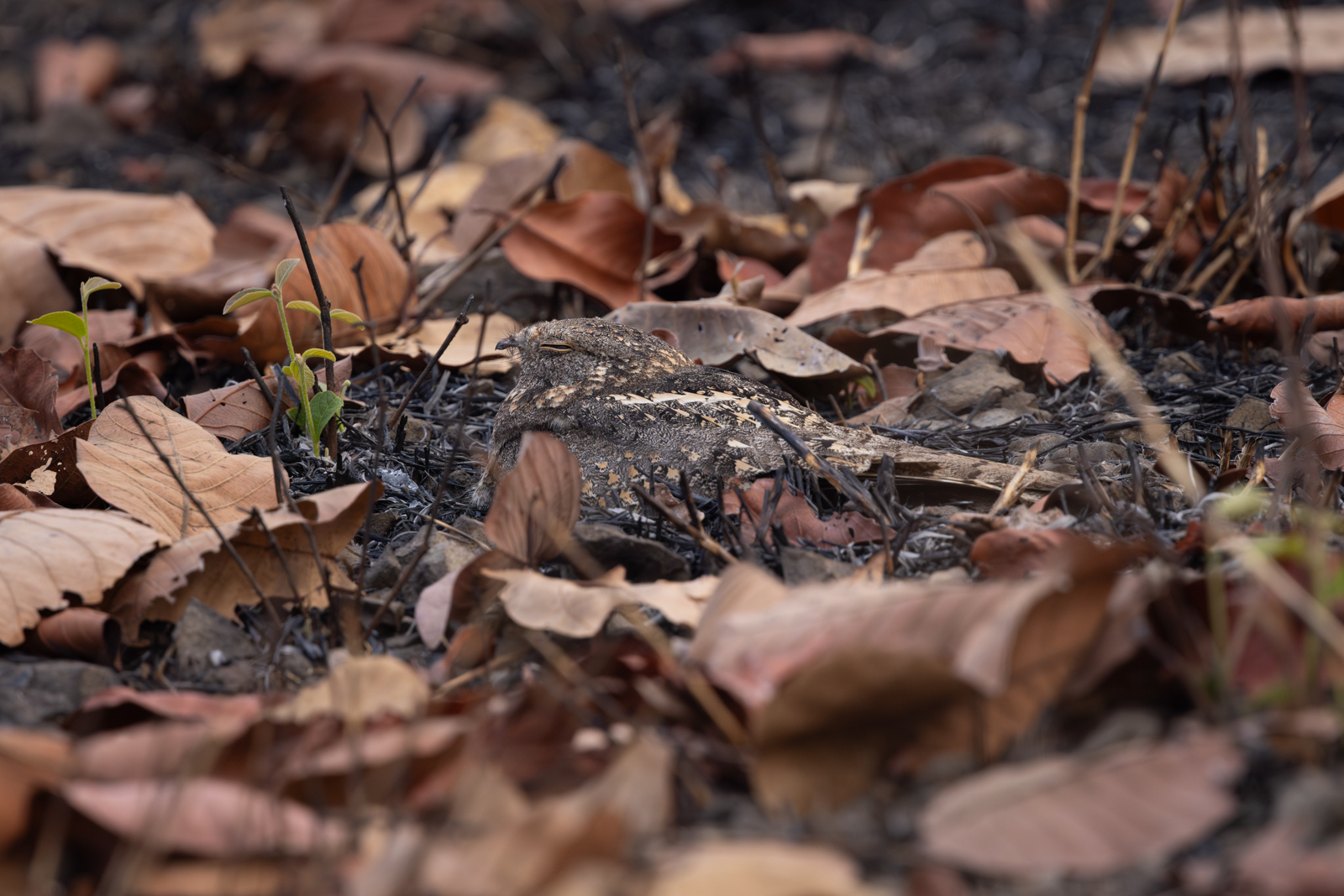
Savanna Nightjar © Chris Burney
Day 15
On our last morning at Tmatboey, we visited two different sites for owls. We were successful at both sites seeing Brown Wood-Owl, Collared Scops-Owl and Brown Fish-Owl. Other highlights included Asian Emerald Cuckoo, another Asian Woolly-necked Stork, Changeable Hawk-Eagle, and Black-hooded Oriole.
We continued on to our next destination, Kratie on the shores of the mighty Mekong River. In the afternoon, we birded several flooded rice paddies near town. Highlights here included Plaintive Cuckoo, Gray-headed Swamphen, Cinnamon Bittern, Dusky Warbler and Brown-throated Sunbird.
Day 16
We spent the morning exploring the Mekong River by boat, our main target the endangered Irrawaddy Dolphin. The weather was perfect, and we found a few pods foraging in the shallows. For birds, our main target is the Mekong Wagtail, a regional endemic. We find them easily hopping around on large boulders in the middle of the river. Other highlights included Peregrine Falcon, Golden-bellied Gerygone, Gray-throated Martin and Bank Swallow.
We then continued on to Phnom Penh, the capital of Cambodia where the trip ended. We made our last stop on the outskirts of the city for one last bird, the endemic Cambodian Tailorbird. It took a little effort, but eventually we got decent looks at a pair.

